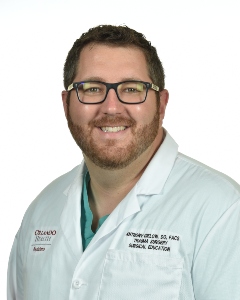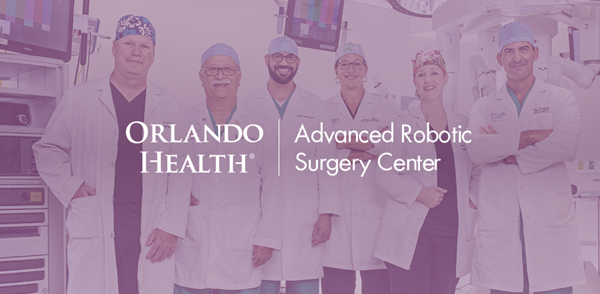If you have a painful hernia, you may have several options for surgery to repair it: open, laparoscopic and robotic. Robotic, a newer procedure in hernia surgery, offers several advantages to consider.
What Is a Hernia?
A hernia is a bulge that occurs in the groin, stomach, belly button or incision as an organ or fatty tissue squeezes through a weak spot in the surrounding muscle or tissue. Hernias can be congenital. Babies may have hernias when abdominal membranes or small intestines protrude through weak abdominal muscles—this bulge is particularly noticeable when the baby cries or coughs. This type of hernia may heal on its own as the baby’s abdominal muscles strengthen.
Most hernias develop over time, often from a combination of weakened muscles, aging and strain in the abdominal and groin areas. Physical activity, obesity, pregnancy, coughing or straining during bowel movements can cause hernias.
In addition to a noticeable bulge, particularly while straining, symptoms of an abdominal or groin hernia include pain or aching at the location of the bulge, pain while lifting, an increase in the size of the bulge and signs of bowel obstruction.
A hiatal hernia—one where the stomach protrudes into the chest cavity through a weakened diaphragm—has symptoms including heartburn, difficulty swallowing and indigestion.
Surgical Treatment Options for a Hernia
Hernias usually do not go away on their own, and surgery is often needed to strengthen the weakened area so the tissue can no longer push through the opening. To repair a hernia, doctors may make an incision near the hernia and insert a surgical mesh that bolsters the area.
Open, laparoscopic and robotic surgeries are different ways to access the hernia area. Open surgery requires a larger incision (four to six inches), allowing the surgeon to manually insert the mesh. A larger incision means more recovery time for the patient and possibly more discomfort. Also, it may be difficult for the surgeon to view all aspects of the surgical area.
Laparoscopic surgery is minimally invasive and involves making smaller incisions (one to one and a half centimeters) and inserting a tiny camera into the surgical opening to enable the surgeon to view the surgery on a screen. As with the open procedure, the surgeon manually manipulates the instruments and placement of the mesh during the surgery.
Robotic surgery also is minimally invasive, with incisions of one to a half centimeter, and uses a clinical robotic surgical system that allows the surgeon to control a 3D camera and mechanical arms to perform the surgery. The surgeon is able to manipulate the mechanical arms within the incision more precisely than a human’s hands can, and the camera allows the surgeon a clear view of the procedure.
With the minimally invasive approach offered by both laparoscopic and robotic surgeries, patients often can be discharged the same day, have less pain and return to work sooner. Robotic surgery offers the advantages of a better view of the surgery and better manipulation of the mesh to ensure the material is applied completely over the weakened area. This reduces the chance of the hernia reappearing.
If you have a hernia, consider talking with your doctor about the different types of surgeries to find out what procedure may be best for you.
Why Choose Orlando Health for Robotic Surgery?
Orlando Health has been designated an “Epicenter” by da Vinci technology representative, Intuitive Surgical. This designation was granted because of our excellent patient outcomes, superb safety record and our surgeons’ extensive experience performing a large number of successful robotic surgeries.
Learn More Here





